Choreography and Composition: Crafting Dance Through Creativity and Storytelling
As someone who has always been captivated by the expressive world of dance, I find the art of choreography particularly enthralling. It’s a realm where creativity and storytelling coalesce, transforming movement into a language of its own. This article, “Choreography and Composition: Crafting Dance Through Creativity and Storytelling,” aims to unravel this intricate art form, with a unique focus on the anime series “Jujutsu Kaisen” as an intriguing case study.
My journey, although not as a dancer or choreographer, has been marked by a deep appreciation for the arts and a curiosity for diverse cultural expressions. From my global travels as a photographer to exploring the nuances of different art forms as a pianist, my experiences have cultivated a rich understanding and appreciation of artistic creativity. It is this perspective that I bring to this exploration of dance, viewing it not just as a spectator but as someone deeply intrigued by its creative potential.
In this article, we will dive into the core elements of choreography — space, time, and energy — and explore how they intertwine to create captivating dance narratives. We’ll discuss the importance of creativity and innovation, drawing inspiration from renowned choreographers who have transformed the dance landscape. Additionally, we’ll delve into the technical aspects, such as the relationship between music and dance and the art of conveying stories through movement.
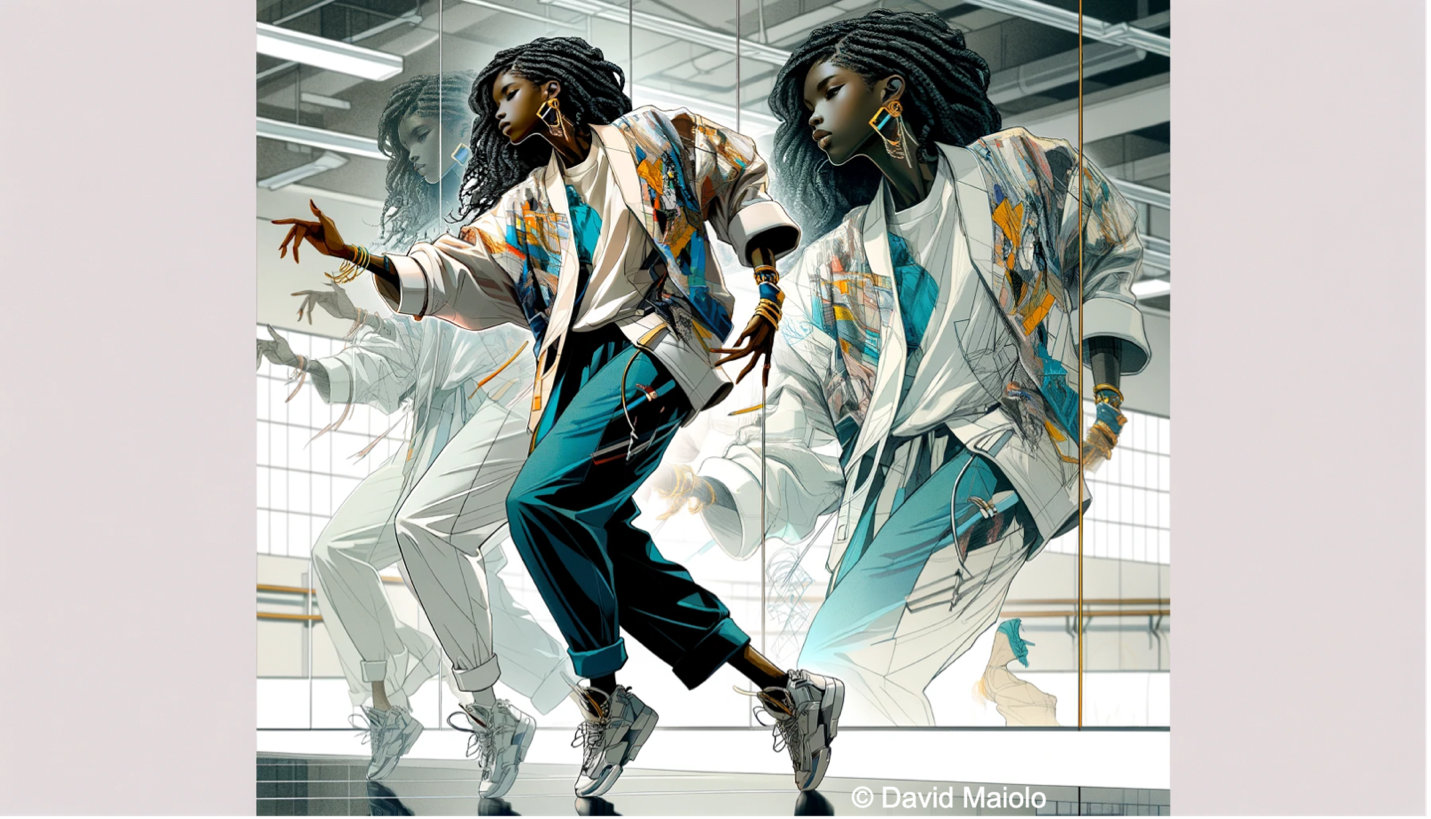
A central feature of our discussion will be the choreographic interpretation of “Jujutsu Kaisen.” This anime series, known for its dynamic and intricate storylines, provides a rich tapestry for exploring how its themes and aesthetics can be translated into dance. This segment aims to illustrate the fascinating intersection between the animated world and choreography, offering a fresh perspective on how diverse art forms can interconnect.
This article is intended not just as a guide but as an immersive journey into the soulful and vibrant world of dance, viewed through the lens of a passionate enthusiast. Whether you are an aspiring choreographer, a dancer seeking inspiration, or simply an art lover, this exploration is designed to offer insights and inspiration to all. Join me in this rhythmic adventure as we discover the magic that lies at the heart of choreography and composition.
Section 1: Foundations of Choreography and Composition
Subsection 1.1: Understanding the Basics
Choreography, at its core, is about making choices. When creating a dance, choreographers manipulate the elements of space, time, and energy to convey meaning and emotion. Let’s delve into these foundational elements:
- Space: This refers to where the dance happens. It includes the directions the dancers move in, the pathways they trace, and the patterns they form. Spatial design can be symmetrical or asymmetrical, reflecting the balance and dynamics of the performance.
- Time: Time relates to the rhythm, speed, and duration of movements. It includes the beats per minute in the music, the pacing of the steps, and the timing of entrances and exits. The manipulation of time creates suspense, anticipation, or a sense of urgency in a dance.
- Energy: Energy speaks to the quality of movement. It encompasses dynamics such as the force, flow, and weight. Whether movements are sharp and quick or smooth and languid, energy imbues dance with texture and feeling.
Table: Theories of Choreography
| Element | Description | Example |
|---|---|---|
| Space | The area within which dance occurs, encompassing level, direction, and shape. | A dancer moving from upstage left to downstage right in a diagonal line. |
| Time | The timing of movements in relation to the music, including rhythm, speed, and syncopation. | A dancer holding a pose for four beats before swiftly transitioning to the next. |
| Energy | The force or quality of movement, ranging from sharp to fluid. | A sequence of quick, staccato steps followed by a slow, sustained lift. |
Subsection 1.2: The Role of Creativity and Innovation
Innovation in dance is the lifeblood that keeps the art form evolving. It’s about challenging the norms, experimenting with new ideas, and bringing a unique voice to traditional movements. Fostering originality in dance requires an environment that encourages risk-taking and supports the exploration of uncharted territories.
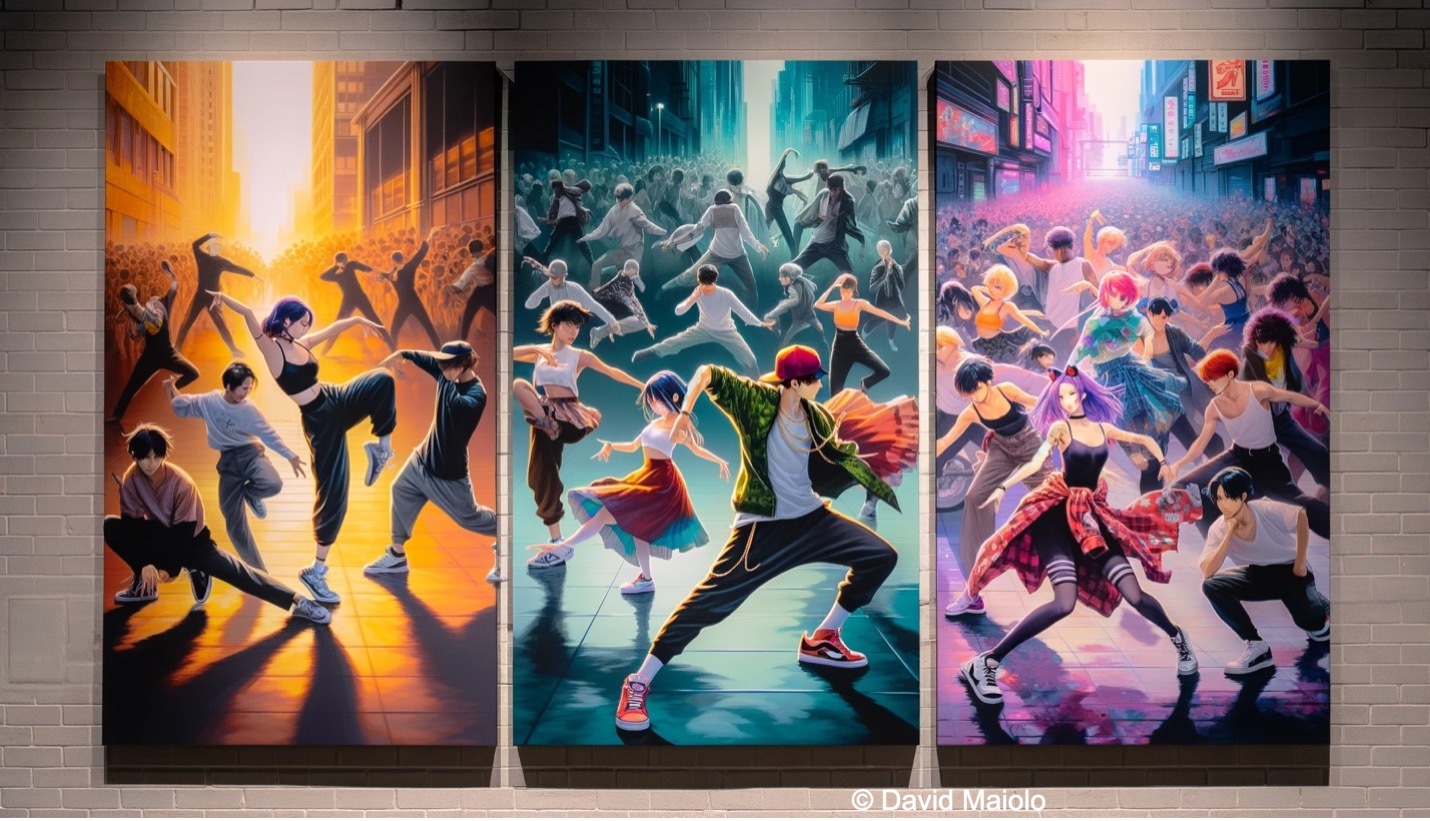
The triptych of art pieces representing the distinct musical influences on various dance styles. Each panel captures the essence of the dance form it represents, from the elegance of classical movements to the raw energy of hip-hop, and the animated dynamism inspired by anime.
One effective approach is to draw from a wide array of influences, both within and beyond the dance world. Integrating cross-disciplinary insights, such as those from visual arts, literature, or even technology, can lead to groundbreaking choreographic work.
Quotes from Renowned Choreographers on Creativity
“Choreography is writing on your feet.” – Bob Fosse
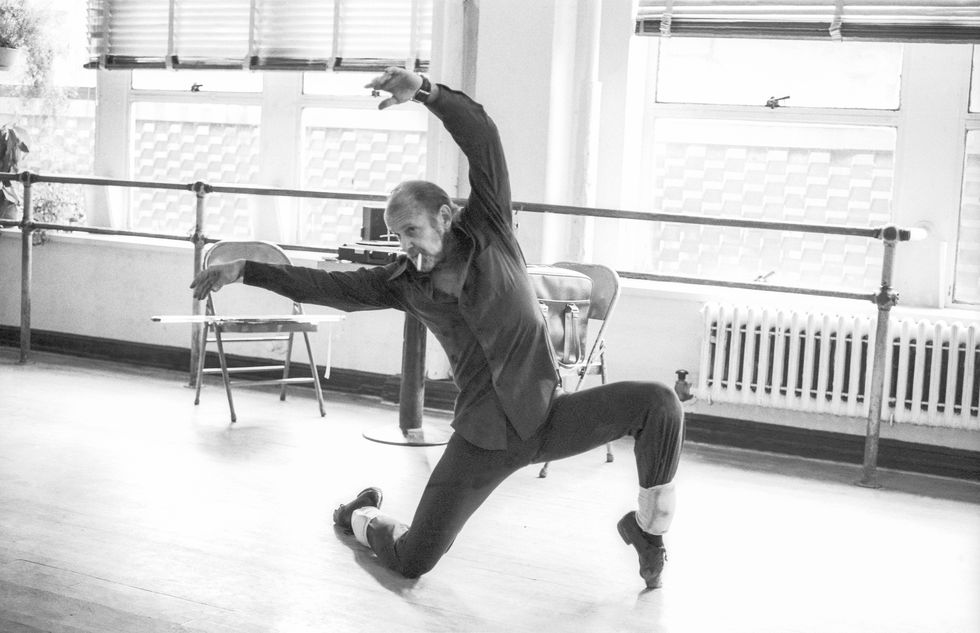
“Dance is the hidden language of the soul.” – Martha Graham
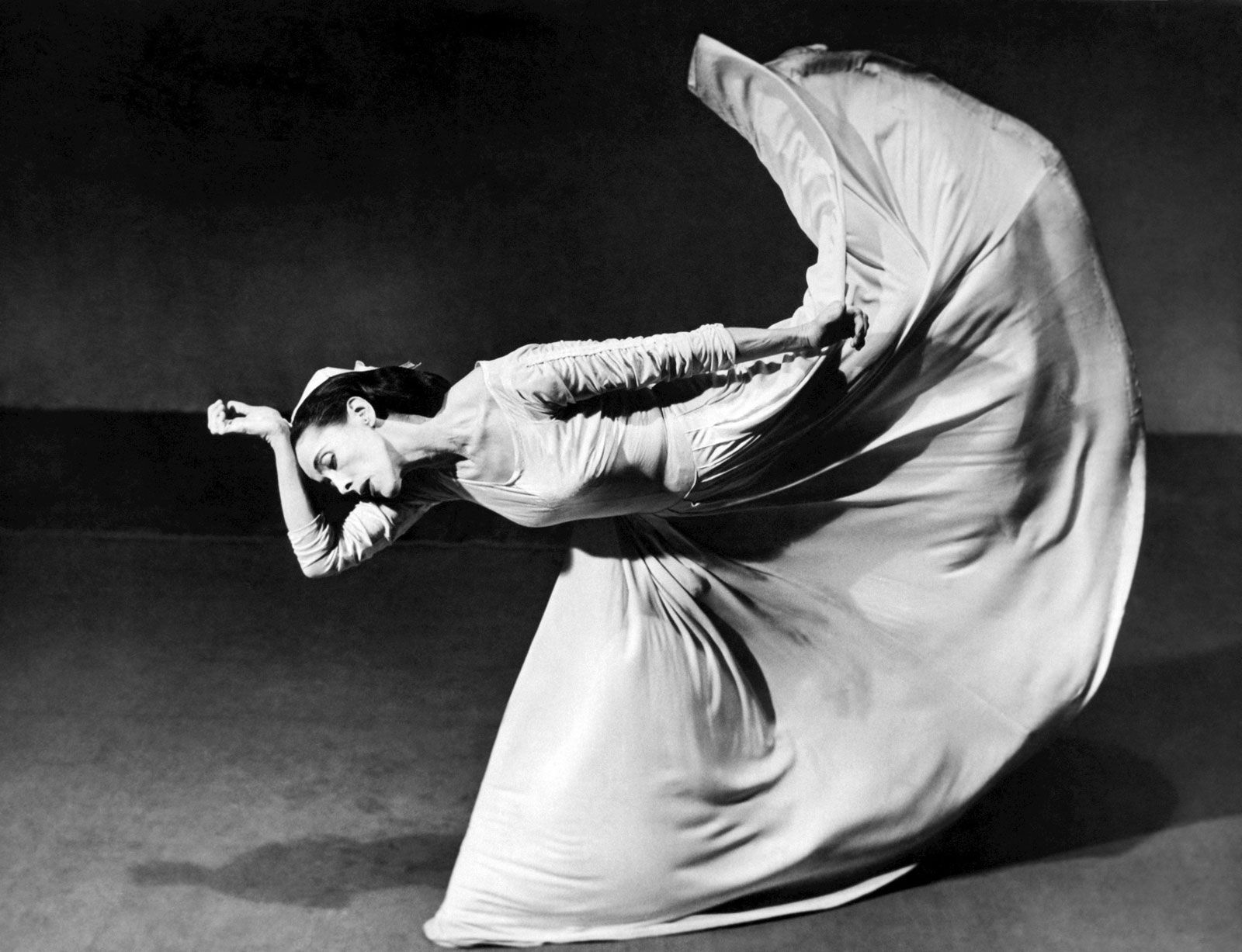
“The job of feets is walking, but their hobby is dancing.” – Amit Kalantri
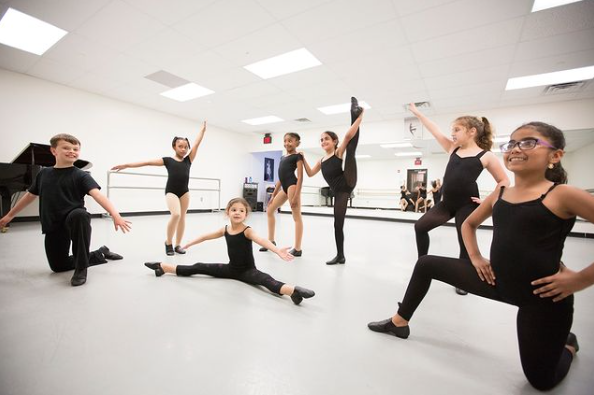
Section 2: Technical Aspects of Choreography
Subsection 2.1: Music and Rhythm
The synchronization of beats to movement is the thread that binds the dancer to the music, a physical manifestation of the score’s rhythm. In the art I generated below, the dancer’s limbs are extended in precise alignment with the invisible beats, each position a note played out through flesh and bone. This synchronization is a complex dialogue where timing is crucial; a fraction of a second off can disjoin what should be a seamless conversation between the music and the dancer. When executed with precision, this interplay transforms into a compelling narrative that the audience can not only see but feel within their own pulse.
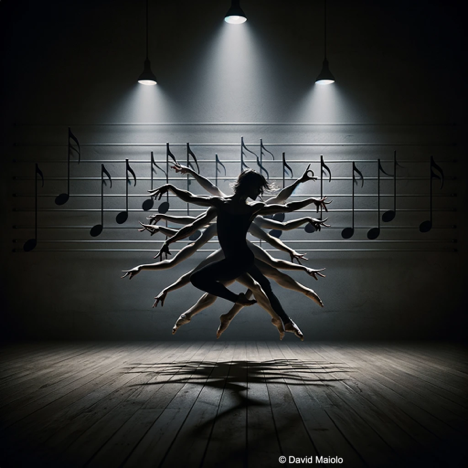
The influence of different styles of music on dance is profound and varied. Classical music, with its intricate harmonies and structured compositions, often leads to choreography that is formal and expressive, such as ballet. The movements are fluid, the transitions are smooth, and there is an emphasis on line and form. In contrast, the hard-hitting beats of hip-hop give rise to more grounded movements, isolations, and an overall raw energy that is palpable in the performance. The dancer’s body becomes an instrument of the beat, hitting each note with sharp precision.
As we consider the influence of anime-themed music on dance, we enter a realm where the traditional meets the contemporary, the East meets the West. This music often features fast-paced rhythms and electronic sounds that can inspire a choreography that is vibrant, high-energy, and dramatic. The dance that emerges from anime music is narrative-driven, much like the storytelling nature of the anime itself, with movements that are exaggerated and filled with emotional intensity.
The triptych of art pieces I put together below serves as a visual representation of these distinct musical influences on dance. It depicts ballerina poised en pointe, her left arm gracefully arched above her head, embodying the elegance that classical music imparts to dance. The second shows a hip-hop dancer mid-freeze, his body angled in a gravity-defying pose that captures the beat-driven essence of the genre. On either side we see a scene straight out of an anime, where the dancer’s pose is exaggerated and dynamic, suggesting a narrative as complex and layered as the music that drives the choreography.
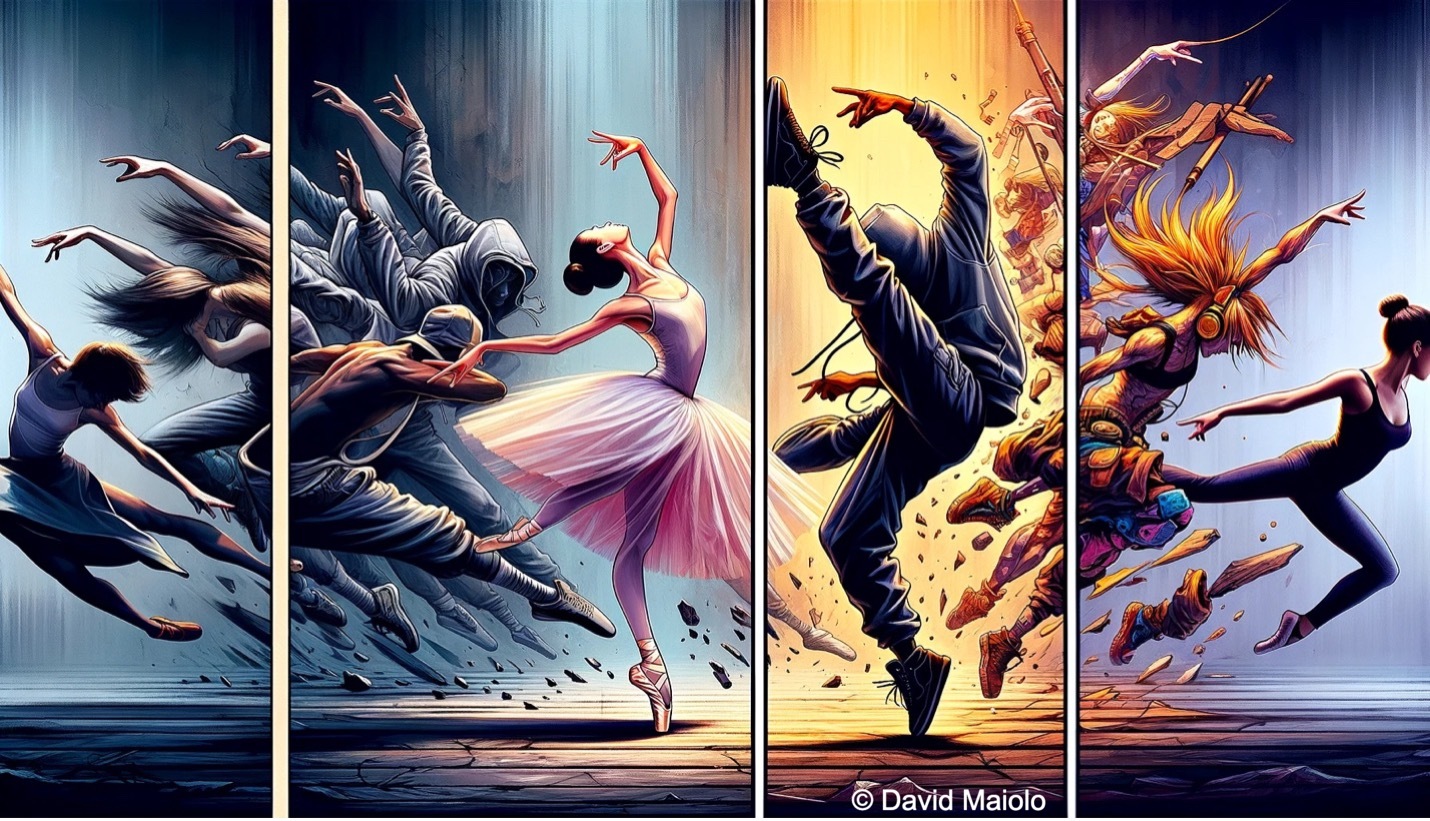
Each style of music carves its unique signature on the choreography it inspires. The choreographer’s role is to interpret these musical cues into a visual dance narrative that not only represents the music but also transcends it, creating a piece that stands on its own as a work of art.
Subsection 2.2: Storytelling Through Dance
Narrative in dance is about using the body to convey a story without words. It’s a visual and visceral form of storytelling that taps into the universal language of emotions. Techniques for narrative conveyance in dance include:
- Mime and Gesture: Using recognizable actions and symbols to illustrate a story or theme.
- Facial Expressions: Enhancing the emotional undertone of the dance.
- Body Language: Utilizing posture and movements to convey character and narrative.
- Repetition and Motif: Establishing a theme or character through repeated movements.
- Contrast and Dynamics: Using varying energy levels and movement qualities to differentiate characters and plot developments.
- Use of Props and Costumes: Enhancing the narrative by incorporating physical elements that support the story.
Table: Storytelling Techniques in Dance
| Technique | Description | Visual Cue |
|---|---|---|
| Mime | Conveying action or emotion through stylized gesture. | A dancer ‘opening a door’ or ‘looking into a mirror’. |
| Expression | Facial cues that reflect the internal emotions of the character. | A frown or a smile to depict sadness or joy. |
| Body Language | The dancer’s posture and motion conveying the essence of the narrative. | A slouched posture for weariness, an upright stance for pride. |
| Repetition | Using a sequence of movements to reinforce a theme or idea. | A dancer repeating a leaping motion to symbolize freedom. |
| Contrast | Juxtaposing different movements to highlight changes in the narrative. | Sharp, quick movements followed by slow, graceful ones to show a transition from conflict to peace. |
| Props/Costumes | Elements that add depth to the story being told by the dance. | A mask to depict transformation or a specific style of dress to place the story in a certain era. |
Section 3: Practical Application – Choreographing for ‘Jujutsu Kaisen’
Subsection 3.1: Understanding the Anime World
“Jujutsu Kaisen,” at its essence, is an intricate narrative that captures the perennial struggle between good and evil, set against a backdrop of a world where cursed spirits and dark forces loom. It’s a tale that centers around Yuji Itadori, a high school student who becomes entangled in an epic battle of sorcerers and malevolent entities. This anime weaves together themes of sacrifice, the significance of life and death, and the pursuit of a righteous path amidst chaos. Understanding these thematic pillars is crucial as they serve as the narrative bedrock for our dance choreography.
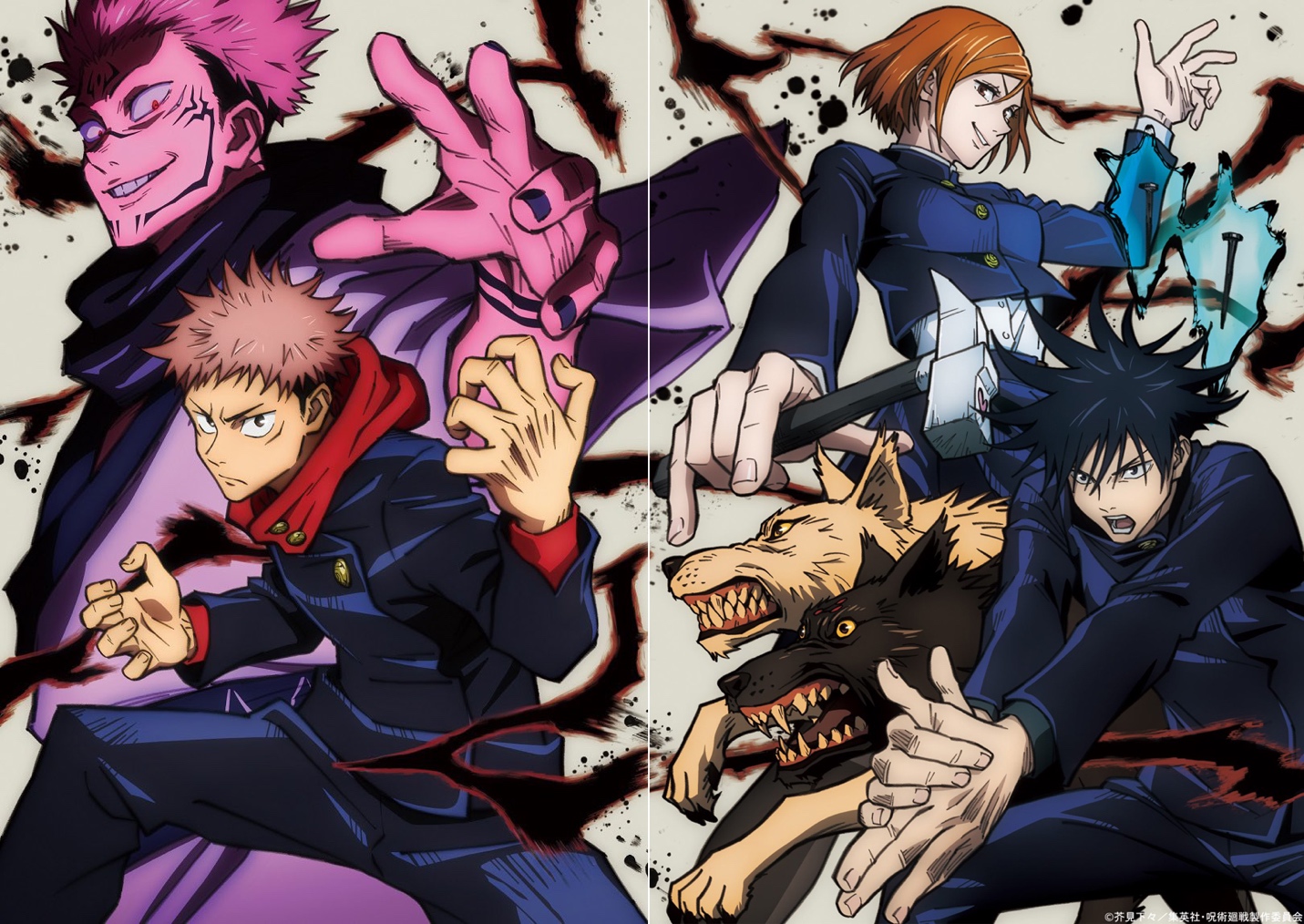
© Jujutsu Kaisen
To truly translate “Jujutsu Kaisen” into a dance routine, one must first become intimately acquainted with the anime’s universe. It’s not just about the high-octane action sequences; it’s about the subtler undercurrents of emotion, relationships, and moral dilemmas that the characters navigate. The intricate storytelling of “Jujutsu Kaisen” is rife with symbolism and layers of meaning, each offering a different rhythm and movement in the choreographic piece we aim to create.
Our dance will need to embody the anime’s dynamic pacing, from the serene moments of introspection to the explosive confrontations. As we conceptualize this transformation, we will draw from key scenes that showcase the series’ signature blend of action and character development. These moments, frozen in time, will inspire our dance sequences, with each step, leap, and turn narrating a part of the “Jujutsu Kaisen” saga.
To fully immerse the audience in the “Jujutsu Kaisen” experience, the visual aids I have put together below will play a pivotal role to help you visualize our art-form as we create it. I created these to underscore the mood and tone of each scene we aim to capture. These visuals will not only guide our choreographic interpretations but also provide a storyboard that aligns our dance narrative with the anime’s storyline.
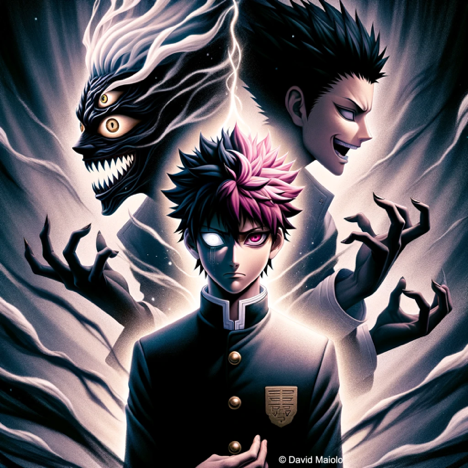
Depicting Yuji’s inner conflict
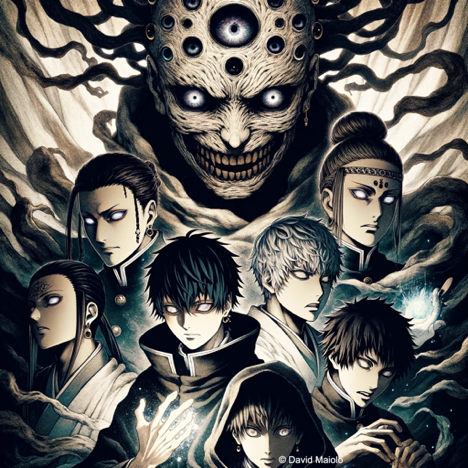
The haunting presence of Ryomen Sukuna – the King of Curses whom Yuji unwittingly becomes host to – and the camaraderie between the sorcerers will serve as the cornerstone for our routine. By integrating these visuals, we set the stage for a performance that not only tells a story but also transports the viewers into the heart of “Jujutsu Kaisen’s” world.
As we delve deeper into the nuances of each character and plot point, the choreography will evolve to mirror the anime’s thematic depth. Our routine will unfold like a carefully crafted narrative, where each movement and expression pays homage to the original work. This section is not just about comprehending the plot; it’s about absorbing the ethos of “Jujutsu Kaisen” to ensure that our dance is a true reflection of its spirit.
Subsection 3.2: Developing a Concept
The concept development stage is where the heart of “Jujutsu Kaisen” begins to beat within the structure of our dance. Developing a dance storyline based on the anime requires a delicate balance of fidelity to the original narrative and artistic interpretation. To achieve this, we must first identify the key story arcs and character journeys that will form the backbone of our choreography.
In our conceptualization, we recognize the need to distill the complex world of “Jujutsu Kaisen” into its most emblematic elements. We look at Yuji Itadori’s unexpected entry into the world of curses and his growth from an ordinary teenager to a sorcerer with the heavy burden of housing a powerful curse within him. The conflict between his innate kindness and the ruthless demands of his new world is a dynamic that we want our dance to explore.
To bring this to life, we envisage a series of interconnected dances, each depicting a significant aspect of Yuji’s journey. From his initial encounters with the curses to the pivotal moments where he grapples with the curse of Sukuna, the King of Curses, and his interactions with fellow sorcerers and mentors. Each piece will be carefully crafted to convey the emotional and psychological evolution of the characters.
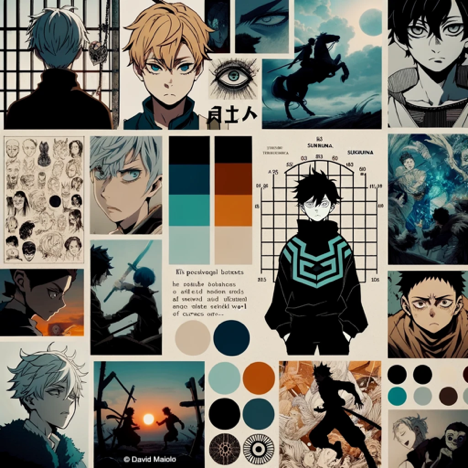
A mood board becomes a crucial tool in this process, a collage of inspiration drawn from various elements of the anime. It would include character sketches, color palettes from the anime’s art direction, and snapshots of key moments. This visual collection will not only serve as a guide for the aesthetic of our dance but also as a constant reminder of the emotional tones we aim to express.
As you create yours, remember the mood board should be peppered with dark, rich colors that reflect the anime’s tone, alongside vibrant bursts that represent the characters’ spirit and determination. Images capturing the intensity of battles, the complexity of the curse techniques, and the depth of the characters’ emotions will inform our choreographic decisions, ensuring that every movement sequence carries the narrative forward.
Through the mood board, we will derive inspiration for the costumes, lighting, and stage design, all of which will be integral to narrating our story. The board will evolve as our concept solidifies, serving as a dynamic, visual script for the unfolding story we are choreographing.
As we solidify our concept, we begin to map out the dance’s structure — identifying the climax, the resolution, and the various peaks and troughs of the story. The resulting concept will not only be a dance routine but an artistic translation of “Jujutsu Kaisen’s” world, a narrative ballet that captures the anime’s soul in the language of movement.
Subsection 3.3: Choreography Inspired by Anime
Crafting a choreography inspired by anime, especially one as action-packed and emotionally charged as “Jujutsu Kaisen,” requires a foray into a style of dance that is as bold and explosive as the source material. The task at hand is to translate the anime’s dynamic visual language into dance movements that carry the same weight and intensity.
To achieve this, we examine the signature physicality of anime: the exaggerated poses that convey a character’s intent, the swift and sometimes abrupt transitions that mark a change in scene or emotion, and the seamless flow from one movement to another that mirrors the fluidity of anime’s frame-by-frame storytelling.
Our choreography will draw heavily from the anime’s high-energy combat scenes, the delicate expressions of internal struggle, and the poignant moments of stillness amidst chaos. These elements will be expressed through a combination of dance styles — each selected for its ability to embody the anime’s diverse thematic elements. For instance:
- Hip-hop and krump can encapsulate the raw intensity of the fight scenes.
- Contemporary dance can convey the complexity of the characters’ emotional journeys.
- Popping can emulate the precision and suddenness of the curse techniques.
In integrating these styles, we also consider the narrative significance of each movement. A leap is not just a leap; it is Yuji’s aspiration to overcome the curses he faces. A contraction is not merely a technical movement; it represents the characters’ grappling with their inner demons and fears.
Table: “Jujutsu Kaisen” Themes and Dance Styles
| Theme | Dance Style | Description |
|---|---|---|
| Combat | Hip-hop, Krump | Energetic, powerful movements that mimic the intense physical battles between characters and curses. |
| Curse Techniques | Contemporary, Popping | Sharp, isolated movements that symbolize the precision and suddenness of curse energy and its manifestations. |
| Camaraderie | Jazz, Lyrical | Expressive sequences that reflect the bonds and relationships between the sorcerers, emphasizing fluidity and emotional connection. |
| Emotional Turmoil | Modern, Interpretive | Movements that express the internal conflicts and psychological complexities of the characters, often using grounded, weighty motions. |
In our choreography, the dancers’ bodies become the medium through which the anime’s storyline is reimagined. Their movements are carefully choreographed not just to entertain but to tell the “Jujutsu Kaisen” story through a dance narrative. We focus on creating sequences that are not only visually spectacular but also narratively coherent, ensuring that the audience can follow the storyline through the language of dance.
The challenge lies in not just replicating the anime’s action but in capturing its essence. This means paying close attention to the subtleties — the gestures that convey a character’s personality, the movements that echo the anime’s thematic depth, and the rhythms that resonate with its overarching narrative pulse.
Subsection 3.4: Music Selection
Selecting the appropriate music for a “Jujutsu Kaisen”-themed dance routine is akin to finding the perfect score for an epic film. The music must not only match the anime’s intensity and pacing but also encapsulate its emotive undercurrents. It must serve as a guiding force that weaves through the choreography, accentuating the narrative peaks and valleys, and resonating with the storyline’s thematic resonance.
The process begins with an analysis of “Jujutsu Kaisen’s” own musical score — its tempo, its rhythm, its use of instruments, and how it underscores the anime’s pivotal moments. From this analysis, we extrapolate the audio elements that can be translated into our dance performance. We look for compositions that can support the narrative arc we’ve crafted, with the flexibility to adapt to the varying emotional landscapes we aim to traverse.
Let’s listen to the original soundtrack together and focus on inspirational tracks:
For our high-octane battle scenes, we may lean towards tracks with a strong, driving beat — perhaps percussion-heavy music that mimics the heart-pounding excitement of combat. These selections will be layered with sound effects that mirror the anime’s energy, creating a soundscape that fuels the intensity of the movements.
Conversely, for moments that delve into the characters’ deeper emotional experiences, we seek out music that speaks to the soul. These tracks might feature a haunting melody or a slower tempo that allows the audience to breathe and fully absorb the narrative unfolding on stage. Here, the music is not just a backdrop but a character in itself, telling a story parallel to the dance.
For a scene depicting the release of cursed energy, the track “Ryomen Sukuna” (track 8, Disc 1) might be the most fitting. Its crescendos and decrescendos capture the eerie nature of the curses, mirroring the ebb and flow of their unpredictable energy.
During moments of introspection or loss, “Feelings of Regret” (track 13, Disc 1) could provide the necessary somber tone. The solitary notes can echo the gravity of these scenes, offering a musical reflection of the characters’ inner turmoil.
For the portrayal of camaraderie and teamwork, “Strong and Intelligent Allies” (track 26, Disc 1) might serve as an uplifting backdrop. Its rhythm could underscore the collective strength of the characters, their unity, and the bonds that they share.
These selected tracks will not just accompany the dance but will guide it, each beat and melody line becoming a part of the choreography itself. The music becomes more than a layer; it becomes the spine of the narrative dance, an essential component of the storytelling.
Each musical piece is carefully vetted to ensure that it aligns with our creative vision and the emotions we wish to evoke. In some cases, we may opt for an original composition or a remix that fuses traditional Japanese instruments with modern beats to pay homage to the anime’s cultural setting while maintaining a contemporary feel.
The music for our “Jujutsu Kaisen”-themed dance routine is curated with meticulous attention to the interplay between audio and visual storytelling. It is a harmonious blend of the anime’s essence and the universal language of rhythm and melody. Through this thoughtful selection process, we ensure that the music not only complements but also enhances the narrative journey of our dance, guiding the audience through the rich tapestry of the “Jujutsu Kaisen” world.
Section 4: Choreography Workshops and Feedback
Subsection 4.1: Collaborative Creation
Choreography, while often seen as the vision of a single individual, flourishes through collaboration. The exchange of ideas, the fusion of diverse movements, and the collective exploration of themes — all of these are vital to the creation of a piece that resonates with both performers and audiences. Collaborative creation encourages choreographers to break from their insular mindset, embracing the input and creativity of dancers, set designers, music composers, and even the audience.
Workshops provide an invaluable platform for this collaboration. They are incubators for innovation where the raw material of inspiration is shaped by the hands of many. In a workshop setting, every step taken, every movement executed is open to interpretation and improvement. This shared space is not only for learning but also for challenging and expanding the boundaries of traditional choreography.
This photo series from a 2021 Student Choreography Workshop at the SAB, School of American Ballet, captures the essence of collaborative creation. We see intense group discussions, spontaneous movement sessions, and the raw emotions of dancers and choreographers engaged in the creative process. These visuals tell the story of a piece’s evolution from concept to performance, highlighting the collective effort behind every choreographed work.
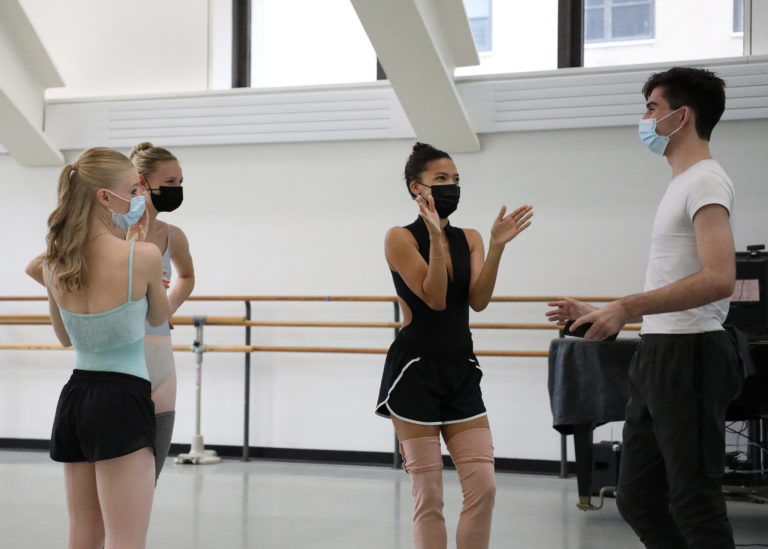
Courtesy of SAB, School of American Ballet
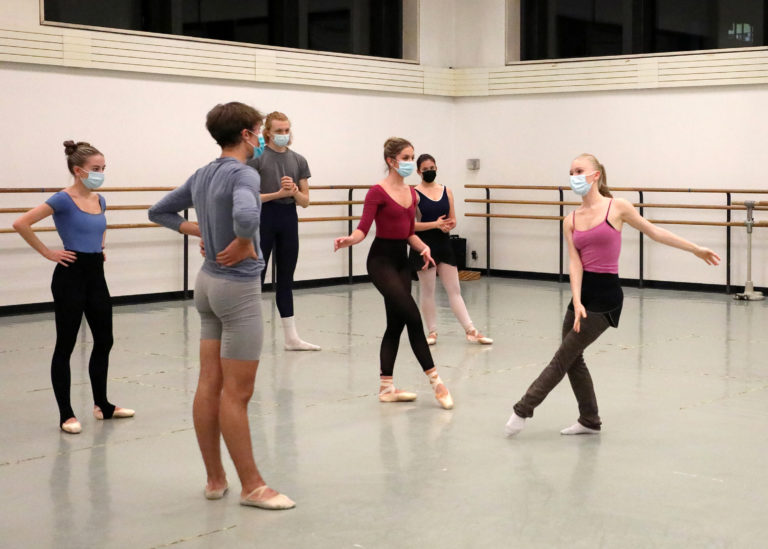 Courtesy of SAB, School of American Ballet
Courtesy of SAB, School of American Ballet
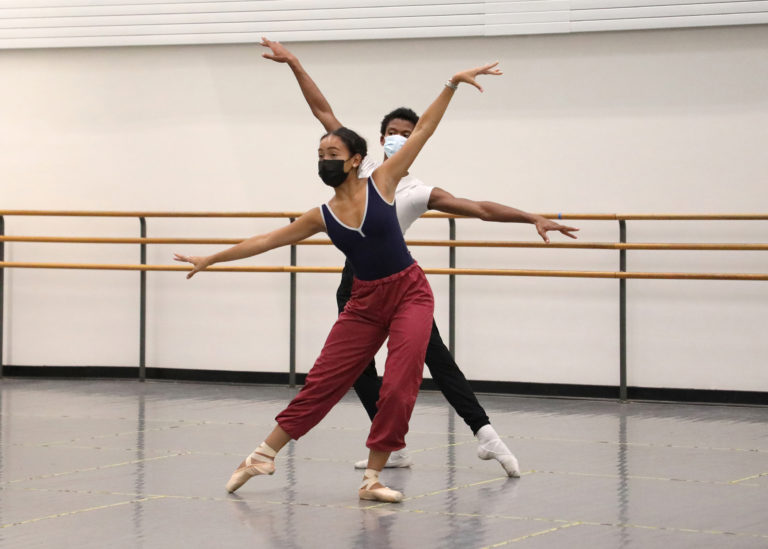
Courtesy of SAB, School of American Ballet
Subsection 4.2: Technical Skills for Staging
Staging a performance is a complex task that extends beyond choreography. It involves a myriad of technical elements that are essential to bringing a dance piece to life. Lighting, sound, set design, and costume are just a few of the components that must be meticulously planned and executed to support and enhance the choreography.
Technical staging skills are crucial for choreographers. Understanding the nuances of lighting, for instance, can transform a performance, creating mood, directing the audience’s attention, and accentuating movements. Sound design, including the selection and timing of music and effects, can significantly affect the pacing and impact of the piece. Set design and props must be thoughtfully integrated to complement the dance, while costumes can express character and era, adding depth to the narrative.
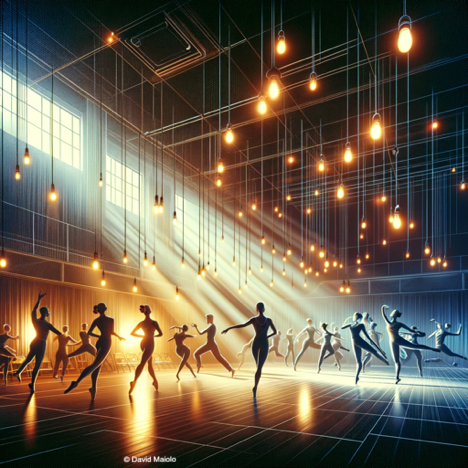
There is such an importance to lighting, as depicted in this art. Always think, how will the lighting affect the story?
Table: Staging Checklist
| Item | Description | Visual Representation |
|---|---|---|
| Lighting | Plan for key lighting moments and general ambiance. | Icons of spotlights and color gels. |
| Sound | Arrange sound cues and ensure quality of acoustics. | Symbols of speakers and sound waves. |
| Set Design | Create a layout that supports the choreography. | Sketches of stage props and backdrops. |
| Costume | Design costumes that reflect the dance’s theme. | Fabric swatches and costume drawings. |
| Rehearsals | Schedule technical and dress rehearsals. | Calendar with marked rehearsal dates. |
The technical staging of a performance is a dance in itself — one of precision, timing, and artistry. It is the unseen choreography that supports the visible, the framework upon which the dance is presented. A well-staged performance allows the choreography to shine, providing a seamless experience that leaves the audience captivated.
Section 5: Career Opportunities in Choreography
Subsection 5.1: Beyond Performance
The field of choreography extends far beyond the stage and studio performances. It encompasses a multitude of career paths, each offering unique opportunities to showcase creative talent and dance expertise. In major cultural hubs like Los Angeles and New York, the career avenues expand into the realms of film, television, theater, and even emerging digital spaces such as virtual reality and video games. Choreographers in these cities often have the chance to work with top-tier talent, contribute to blockbuster productions, and innovate in spaces where technology meets dance.
In smaller cities like Buffalo, NY, choreographers might engage more closely with community theaters, local dance schools, and regional television. These settings offer the chance to have a substantial impact on the local arts scene, often allowing for greater creative control and the opportunity to foster grassroots talent. Moreover, smaller cities can be breeding grounds for dance innovation, with opportunities to create and lead dance initiatives or start one’s own dance company.
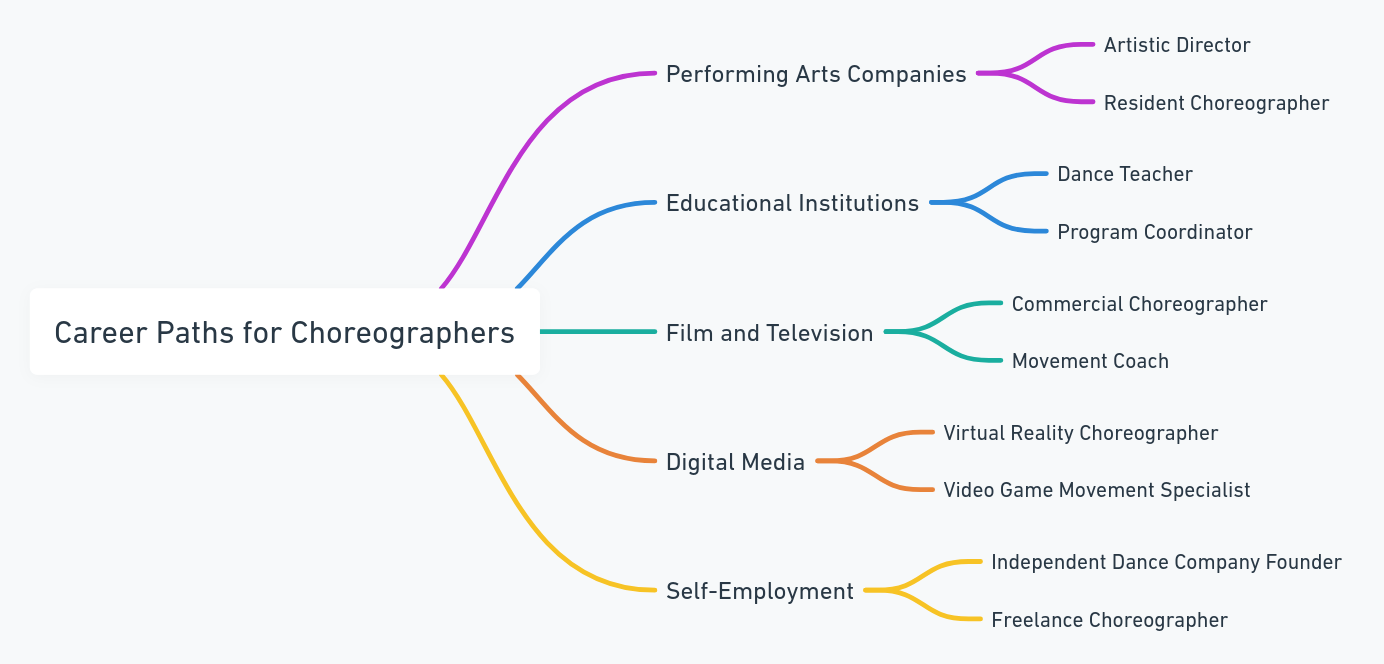
Subsection 5.2: Advice for Aspiring Choreographers
For those looking to pursue a career in choreography, the journey is as much about developing one’s craft as it is about understanding the industry. Here’s some advice for aspiring choreographers:
- Cultivate a Unique Style: Find your voice in dance. What makes your work stand out? What stories are you compelled to tell?
- Continue Learning: Stay a student of dance. Explore different styles, study the masters, and keep abreast of industry trends.
- Network: Build relationships within the dance community. Collaboration and connections can lead to opportunities.
- Be Versatile: Learn to choreograph for a variety of settings and groups. Flexibility can open doors in multiple dance environments.
- Understand the Business: Know the basics of contracts, negotiations, and marketing. A successful choreographer is also a savvy entrepreneur.
Table: Skills and Attributes for Choreographers
| Skill/Attribute | Description | Importance |
|---|---|---|
| Creativity | The ability to conceive and execute original ideas in dance. | Essential for developing unique and engaging routines. |
| Leadership | Directing rehearsals and guiding dancers to interpret choreography. | Critical for maintaining the vision and quality of the performance. |
| Communication | Clearly conveying ideas to dancers, producers, and clients. | Necessary for collaboration and ensuring that concepts are understood. |
| Adaptability | Adjusting choreography to suit different venues or talent abilities. | Important for working in various performance settings. |
| Technical Knowledge | A strong foundation in dance techniques and styles. | Fundamental for creating choreographically sound and safe routines. |
Conclusion
As we reach the finale of our exploration into the world of choreography, we reflect on the journey we’ve undertaken. From the foundational principles of dance composition to the intricate process of crafting a routine inspired by the vibrant storytelling of “Jujutsu Kaisen,” we’ve traversed the multifaceted landscape of choreography. We delved into the technical aspects that intertwine music and movement, and we unlocked the narrative power of dance as a form of storytelling. Moreover, we cast a spotlight on the varied career opportunities that await in both the bustling metropolises and the close-knit communities of smaller cities.
The world of choreography is as diverse as it is dynamic, continuously evolving with the rhythms of time, culture, and technology. It beckons those who are not only passionate about dance but who also have the drive to bring stories to life through the tapestry of movement. For aspiring choreographers, the path is one of constant learning, unwavering creativity, and the courage to carve out a space in the dance world.
Appendix: Resources and Further Reading
For those who wish to delve deeper into the world of dance and choreography, the following resources provide a wealth of information:
Table: Comprehensive List of Resources
| Resource | Description | Type |
|---|---|---|
| Dance Magazine | Offers a range of articles on dance technique, industry news, and choreographer interviews. | Magazine |
| The Choreographer’s Handbook | A comprehensive guide by Jonathan Burrows on the creative process of choreography. | Book |
| Dance/USA | The national service organization for professional dance, providing leadership and resources. | Website |
| Jacob’s Pillow Dance Interactive | An online video archive of dance performances and documentaries. | Digital Archive |
| International Choreographers’ Festival | An event that showcases new works and provides networking opportunities. | Festival |
In closing, our foray into choreography is a testament to the art’s capacity to stir the soul, challenge the body, and elevate stories to new heights. It’s an invitation to step into the dance, to embrace the beat of creativity, and to leave an indelible mark on the canvas of human expression. Whether through the lens of a specific narrative, like “Jujutsu Kaisen,” or through the broad strokes of career development, choreography remains a field ripe with possibility and rich with potential for those who dare to dream in motion.
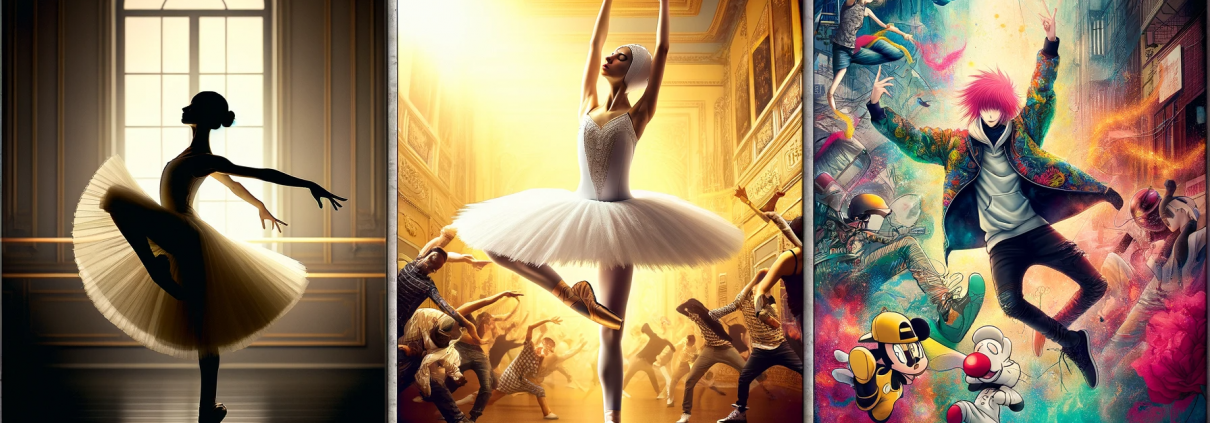

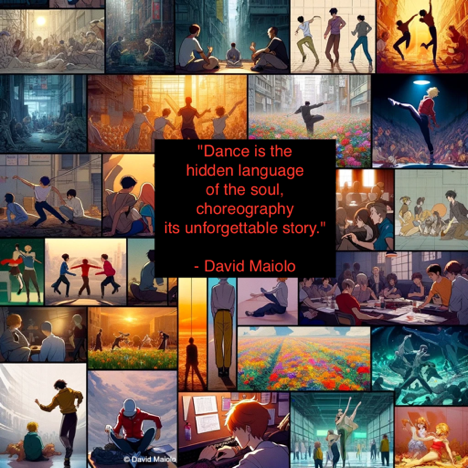


Leave a Reply
Want to join the discussion?Feel free to contribute!